Disclosure: Some of the links below are Amazon affiliate links. This means that, at no cost to you, we may earn an affiliate commission if you click through the link and complete a purchase.
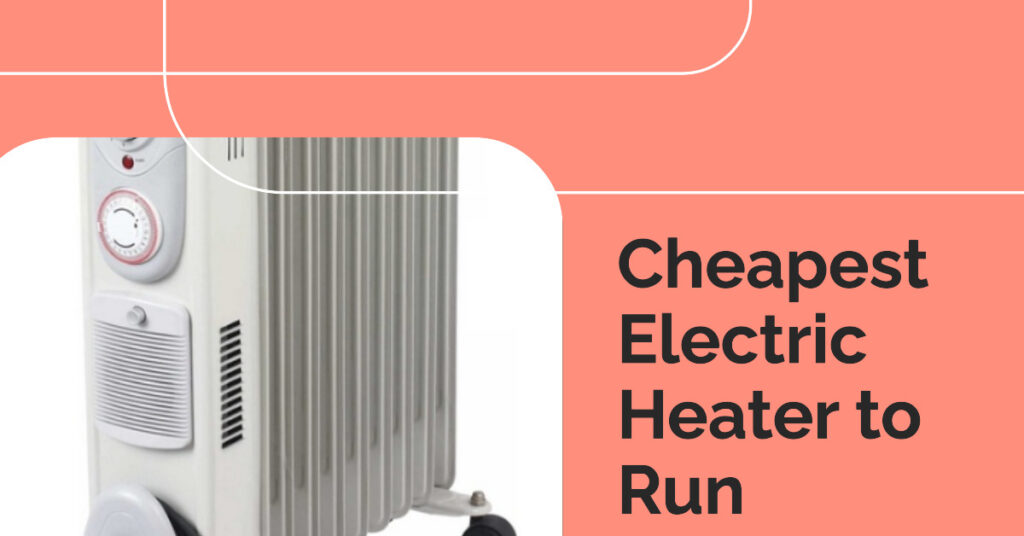
Are you tired of receiving high electric bills during the winter months due to running your heater constantly? You’re not alone. Many people struggle to find a balance between staying warm and keeping energy costs low. The good news is that there are affordable electric heaters available that won’t break the bank when it comes to your bill. But which one is the cheapest electric heater to run?
Key Takeaways
Infrared heaters are the cheapest to run since they emit a constant and gentle heat that heats objects instead of air. Oil-filled radiators, convection heaters, and fan heaters are affordable options too. Halogen heaters are the least costly among the five, but they are not very efficient.
- Halogen Heaters: Affordable, portable, and quick-heating, suitable for small spaces.
- Convector Heaters: Fast heating but consume more electricity, better for short-term heating.
- Radiator and Panel Heaters: Affordable, convection-based, provide long-lasting heat.
- Fan Heaters: Affordable, portable, best for small spaces, slightly less energy-efficient.
- Electric Heater vs Central Heating: Consider your specific needs and home insulation when choosing between electric heaters and central heating.
- Factors to Consider: Factors like home size, number of rooms, insulation, and overall energy usage influence the choice of heating method
Let’s discuss the factual data and dive into the top options for cost-efficient heating solutions. Say goodbye to expensive heating bills and hello to a warm and cosy home.
Looking for ways to heat your home without breaking the bank? You’re in luck because there are plenty of electric heaters that won’t torpedo your electricity bill. In this article, we will discuss the cheapest electric heaters to run, how to calculate energy efficiency, and the types of electric heaters available in the market.
According to our research, the following are the top five electric heaters with low running costs:
- Infrared heaters
- Oil-filled radiators
- Convection heaters
- Fan heaters
- Halogen heaters
When choosing an electric heater, it’s important to calculate energy efficiency. We measure electricity in kilowatts per hour, and the cost varies depending on your electricity tariff and plan. To give you an idea of the cheapest running costs, we have calculated the hourly running costs for each type of heater based on the average electricity prices from April 2023.
There are different types of electric heaters available in the market, each with their own advantages and disadvantages. We have discussed halogen heaters, convection heaters, and infrared heaters above. Other options include panel heaters, ceramic heaters, and radiant heaters. It’s important to choose the right heater for your room size and your heating needs.
Electric heaters are a great way to heat individual rooms without firing up the central heating. By choosing the right type of heater, you can save money on your electricity bill and stay warm and cozy all winter long.
What Are The Most Energy Efficient Electric Heaters?
Electricity is not cheap, so finding the most energy-efficient electric heaters is essential. To determine the most energy-efficient heater, we have to consider two factors: heating output and electricity expenditure. According to the Department of Energy, electric space heaters are more expensive to operate, but they are safer to use indoors than combustion space heaters.
The question remains, which one is the most energy-efficient? Unfortunately, there is no specific energy rating system for electric space heaters, but you can compare the input wattage to determine which one to buy.
In terms of energy efficiency, the infrared heater stands out as the cheapest and most efficient to run. They emit a constant and gentle heat that works just like the sun and heats up objects, not air, which makes them highly efficient. Also, they use off-peak electricity tariffs, which saves on running costs. Another benefit of infrared heaters is that you can control them individually, so you don’t have to waste money heating unused areas.
Another contender for the most energy-efficient heater is the oil-filled radiator heater. According to Build With Rise, they are highly efficient because they heat up slowly and retain heat even after the power is turned off. Also, they use less energy to maintain the temperature, making them a cost-effective option. As a bonus, they do not release harmful gases or chemicals, making them safer for the environment.
In conclusion, the infrared and oil-filled radiator heaters are the most energy-efficient options. They not only save you money on running costs but also provide an eco-friendly option for heating a room.[1]
Types of Electric Heaters
Electric heaters come in various types and each has its advantages and disadvantages in terms of cost, efficiency, and heating capacity. Here are the three main types of electric heaters:
1. Radiator and Panel Heaters: These heaters are affordable and available in different sizes. They work by heating up oil-filled panels and radiators. They have relatively slow heat-up times but are good at maintaining a consistent temperature. “Panel heaters are a great option for bedrooms, as they heat up fast, are easily mounted on the wall, and have a thermostat to ensure comfortable heat levels,” says Lucy Trevallion, editor at Homeworthylist.
2. Convector Heaters: They are fast heaters but consume more electricity than radiator or panel heaters. They work by heating up air and circulating it through the room. They have a quick heat-up time and are ideal for emergency heating or quick warm-ups. As Trevallion says, “Convector heaters are perfect for warming up a cold room fast, but they can be costly to run for a long time, so it’s best to use them only when necessary.”
3. Fan Heaters: These portable heaters use a fan to distribute heat throughout the room. They are compact and easy to move around, making them great for small spaces or personal use. However, they can be noisy and consume more electricity as the fan consumes extra energy. “Fan heaters are a great option for small spaces or for warming up quickly, but be aware of the noise they make and the cost of running them,” warns Trevallion.
In conclusion, understanding the different types of electric heaters and their respective heating capacities and energy consumption rates can help consumers choose the cheapest and most efficient option for their specific needs.
How to Calculate Electric Heater Running Costs
If you’re considering buying an electric heater, it’s important to know how to calculate the running costs to avoid any surprises on your monthly electric bill. Luckily, it’s a straightforward process that anyone can do. All you need to know is the wattage of your electric heater, the price of electricity in your area, and how many hours per day you plan to use it.
To calculate the hourly cost of running an electric heater, use the following formula: Heating Running Cost (per hour) = Power (W) * Price Of Electricity (£ per kWh) / 1000. For example, if you have a 1500-watt electric heater and the price of electricity in your area is £0.2819 per kWh, the hourly cost of running your heater would be around £0.50.
To estimate the daily, weekly, or monthly costs, simply multiply the hourly cost by the number of hours you plan to use the heater. For instance, running a 1500-watt heater for 8 hours a day would cost £4.00 per day, £28.00 per week, and £112 per month.
It’s worth noting that the running costs of electric heaters can vary depending on their wattage and the price of electricity in your area. To get a more accurate estimate, use an electric heater running cost calculator that takes these factors into account. You can find free online calculators that will give you an estimate of your heater’s running costs based on your specific wattage and electricity rate.
Calculating the running costs of electric heaters can help you make an informed decision about which heater to buy and how to keep your energy bills in check. As the saying goes, “knowledge is power” – in this case, it can save you money too! [2]

Infrared Heaters: Our Top Choice
Infrared heaters, like this superb free standing model from Micatronic, are one of the cheapest electric heaters to run due to their energy efficiency. Unlike traditional electric heaters that warm the air, infrared heaters heat objects and people directly through radiation. This means they use 40% less energy and cost 40% less to run than electric heaters.
Infrared heaters are most useful in rooms where people spend most of their time, such as living rooms, bedrooms, and offices. They are also great for outdoor spaces like patios and decks, as they provide heat without the need for propane or natural gas.
One of the biggest pros of infrared heaters is their energy efficiency, which can lead to significant savings on electricity bills. They also provide even heat distribution and can quickly warm up rooms up to 1,000 square feet. Additionally, infrared heaters are safe to use and do not emit any harmful gases or fumes.
On the other hand, infrared heaters can be more expensive to purchase upfront compared to other types of electric heaters. They also require a clear line of sight to the objects or people they are heating, which can be a drawback in larger rooms or spaces with obstacles.
Overall, infrared heaters are a great option for those looking for a cost-effective and energy-efficient way to heat their homes. By choosing an infrared heater, you can enjoy the benefits of warmth and comfort while saving money on your electricity bills. Check out our [affiliate link](insert your affiliate link here) to find the best deals on infrared heaters today!
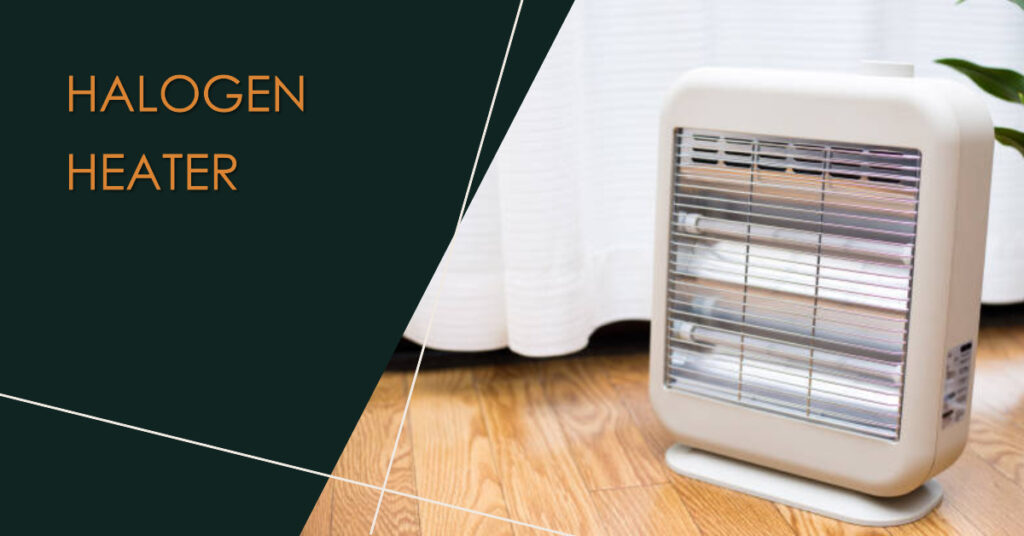
Halogen Heaters: Cheap and Efficient
Halogen heaters are one of the most popular and affordable types of electric heaters available. They are relatively small and portable, like this one from Highlands, making them ideal for use in small spaces such as bedrooms, nurseries, or home offices. Halogen heaters are also known for their quick heating ability, making them ideal for providing instant warmth on chilly days.
They offer instant heat and have an average power output of 1200W, which is enough for most small to medium-sized rooms. In addition, halogen heaters are efficient and cost-effective to run, making them a popular choice for budget-conscious consumers.
One of the unique features of halogen heaters is their use of halogen elements to produce heat. The halogen element, when paired with electricity, causes the heater’s bulb or light to glow and radiate heat. This unique design allows halogen heaters to focus infrared energy on a single object or person, providing targeted warmth without wasting energy heating the entire room.
Halogen heaters are also ideal for outdoor heating or draughty rooms such as in a building without adequate insulation. They are efficient and effective at heating small spaces, but may not be suitable for larger rooms or open-plan living areas. In addition, halogen heaters should not be left on for extended periods, as they can be a fire hazard if not used properly.
Halogen heaters are a cost-effective and efficient option for those looking for an affordable electric heater. They offer quick and targeted heat, making them ideal for use in small spaces and for providing instant warmth on cold days. With their affordable price point and efficient operation, halogen heaters are a popular choice for many consumers looking to save on energy costs while staying warm and comfortable.
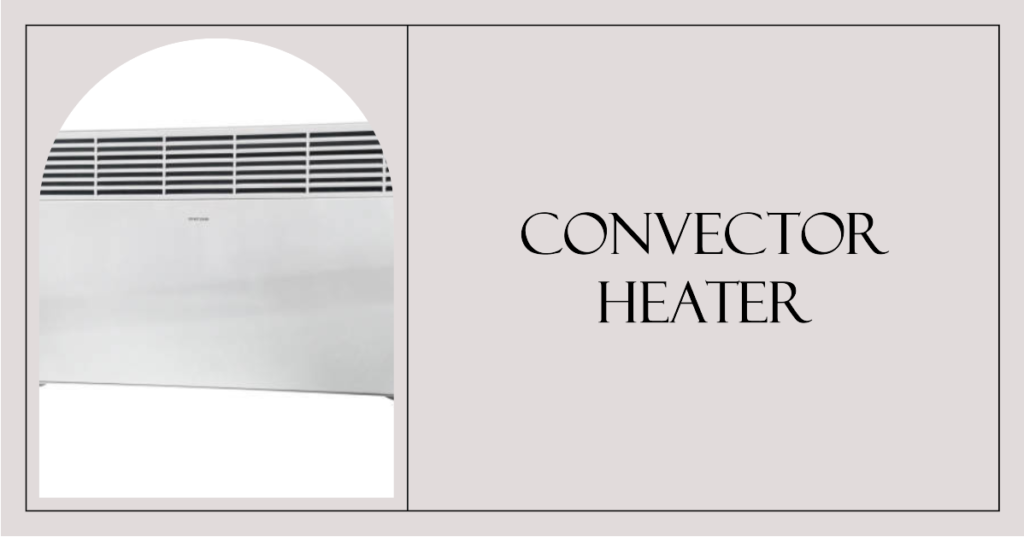
Convector Heaters: Fast Heating and Costly
Convector heaters are known for their fast heating capabilities, making them a popular choice for those who need to heat a room quickly. However, this convenience comes at a cost, as convector heaters tend to consume a lot of electricity. In fact, they are often considered one of the costliest types of electric heaters to run.
According to a study by TheGreenAge, convector heaters have an average wattage of 2,000 watts, which means that they can use up a considerable amount of electricity in a short amount of time. As a result, they may not be the most cost-effective option for those who need to heat a room for an extended period.
That being said, if you only need to heat a room for a short amount of time, a convector heater may be a good option for you. They are known for their fast heating capabilities, as they use a fan to blow hot air out into the room. This means that they can quickly raise the temperature of a room, making them ideal for use in spaces that are only occupied for short periods.
When it comes to choosing a convector heater, it’s important to look for one that has adjustable heat settings and an automatic shut-off feature for safety. As with any electric heater, it’s also important to use it responsibly and not leave it running unattended.
While convector heaters may be fast and convenient, they may not be the most cost-effective option for those who need to heat a room for an extended period. As with all types of electric heaters, it’s important to consider your specific needs and energy usage habits before making a decision.
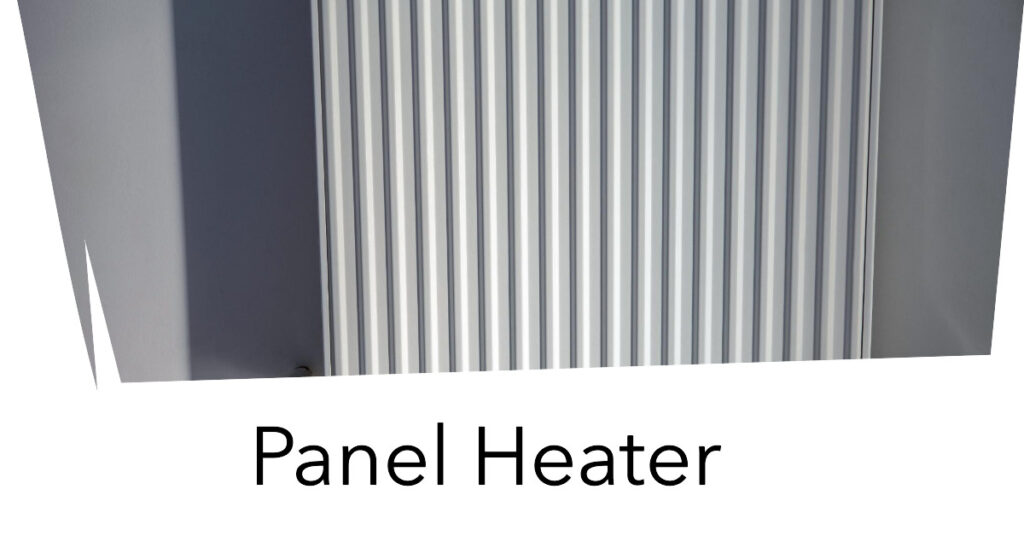
Radiator and Panel Heaters: Affordable Options
When it comes to electric heaters, radiator and panel heaters are two affordable options worth considering. These types of heaters work by convection, meaning they warm up the entire room by circulating the air. While they may not be the cheapest option to run in terms of electricity usage, they make up for it by providing long-lasting heat.
One affordable option is the De’Longhi TRNS0505M Oil Filled Radiator. This heater has a built-in thermostat and a 24-hour programmable timer, making it easy to control and energy-efficient. The oil-filled design means it is highly energy-efficient and has a low surface temperature, making it safe for use around children and pets.
Another affordable option is the Adax Neo Wall Mounted Electric Panel Heater. This heater can be wall-mounted or used independently with the included feet. It has an adjustable thermostat and a two-year warranty. The slimline design means it can fit into small spaces and is perfect for those with limited floor space.
Overall, radiator and panel heaters provide an affordable option for those in need of a long-lasting heat source. As the DeLonghi TRNS0505M and Adax Neo Wall Mounted Electric Panel Heater demonstrate, there are quality options available for those on a budget. As always, be sure to consider factors such as the size of the room, the amount of insulation, and personal usage habits when selecting the best heater for your needs.
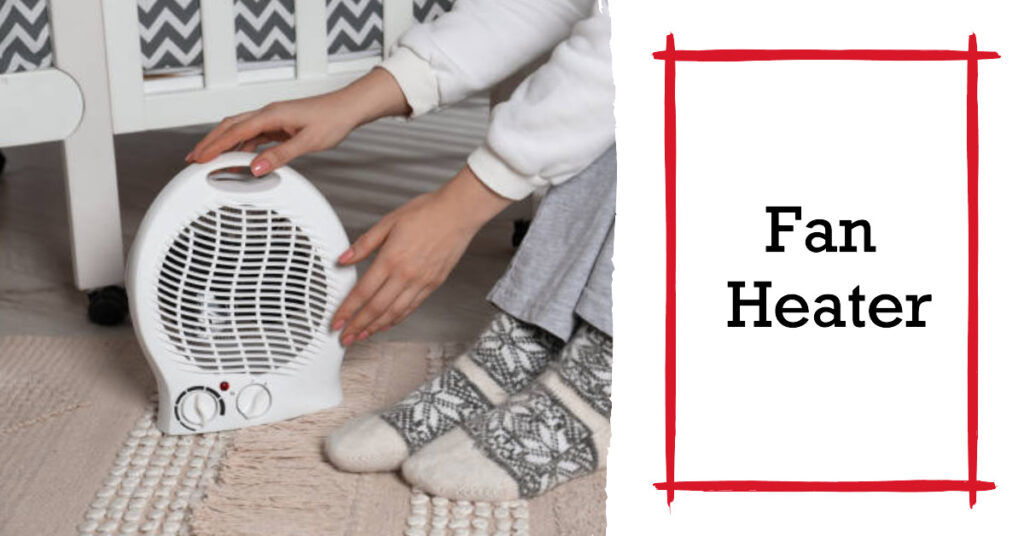
Fan Heaters: Portable and Affordable
When it comes to finding the cheapest electric heater to run, fan heaters are a popular option due to their affordability and portability. These heaters work by using a fan to blow air over a heating element, which then warms up the surrounding area. Here are some key points to keep in mind when considering a fan heater as your go-to heating solution:
– Fan heaters are generally more affordable than other types of electric heaters, with prices ranging anywhere from £20 to £100.
– Due to their small size and lightweight design, fan heaters are easy to move around and can be placed in various locations throughout your home for optimal heating.
– However, it’s important to note that fan heaters are not suitable for larger rooms or spaces. They are best used in smaller areas, such as a bedroom or home office.
– According to Energy.gov, the efficiency of electric heaters is measured by their Annual Fuel Utilization Efficiency (AFUE) rating. Fan heaters typically have a lower AFUE compared to other types of electric heaters, meaning they may consume more energy to produce the same amount of heat.
– Despite their slightly lower efficiency rating, fan heaters can still be an energy-efficient option when used correctly. For example, Energy.gov suggests setting your thermostat to a lower temperature and using a fan heater to supplement the heat in one area of your home.
If you’re in need of a small, affordable, and portable heating solution for a smaller space in your home, a fan heater may be the perfect choice for you. Just be mindful of their limitations and use them in conjunction with other heating methods for optimal efficiency.
Electric Heater vs Central Heating
When it comes to heating your home, you may be wondering whether an electric heater or central heating is more cost-effective. According to This Is Money, over half of an average household’s energy bill is spent on heating and hot water. So, it’s important to consider your options carefully.
If you live in a poorly insulated home or only need to heat one or two rooms, a space heater may be a more practical choice. Consumer Reports found that newer models with built-in safety features can efficiently heat a single space without the need to heat the whole house. However, it is worth noting that using multiple space heaters simultaneously can get expensive in terms of both the cost of each individual heater and the electricity it takes to run them.
On the other hand, central heating is a more comprehensive solution for heating your entire home. It can be more cost-effective if you have a well-insulated home and need to heat many rooms at once. Gas-fired central heating systems are the most efficient, followed by systems fired by oil or coal. However, if your central heating unit uses fuels like natural gas and coal to generate electricity, it could be considered the least efficient as 70% of the energy is wasted during the conversion process.
Ultimately, the choice between electric heaters and central heating depends on your specific needs. As Angharad Carrick of This Is Money explains, “there’s no one-size-fits-all answer” to whether it’s cheaper to use electric heaters or central heating. However, it’s worth considering factors like the size of your home, the number of rooms you need to heat, and how much you’re willing to spend on heating. [3][4]
